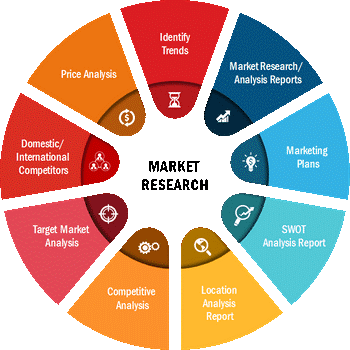Der Markt für Carbon-Verbundwerkstoffe wird voraussichtlich von 20 Milliarden US-Dollar im Jahr 2022 auf 30 Milliarden US-Dollar wachsen Milliarden bis 2031; Es wird geschätzt, dass sie zwischen 2022 und 2031 mit einer jährlichen Wachstumsrate von 7 % wachsen wird.
Carbon-Verbundprodukte haben unterschiedliche Formen und Gestalten. Sie finden Anwendungen in der Automobil-, Luft- und Raumfahrtindustrie. Verteidigung, Schifffahrt, Windkraftanlagen, Sport und andere Branchen. Kohlenstofffaserverstärkte Polymerverbundwerkstoffe werden häufig in Automobil- und Luft- und Raumfahrtanwendungen eingesetzt. Sie sind von Natur aus stark und leicht. In der Luft- und Raumfahrtindustrie ist kohlenstofffaserverstärkter Kunststoff der ideale Werkstoff für den Leichtbau. Daher wird erwartet, dass der Markt für Kohlenstoffverbundstoffe im Jahr wachsen wird kommende Jahre. Die Kohlefaser-Verbundwerkstoffindustrie wächst stetig, da ständig neue Fortschritte und Anwendungen auftauchen.
MARKETDYNAMIK
Die Kohlefaserverbundwerkstoffe bieten erhebliche Vorteile in Automobilanwendungen. Aufgrund der Kostenbeschränkungen des Mainstream-Marktes sind Carbon-Verbundwerkstoffe im Automobilbereich vor allem in den Kategorien Sportwagen bis Hypercars und im Motorsport anzutreffen. In der Luft- und Raumfahrtindustrie werden Verbundwerkstoffe auf Kohlenstofffaserbasis zur Herstellung von Clips, Stollen, Halterungen und anderen Flugzeugteilen verwendet. Aufgrund der zunehmenden Präferenzen für Gewichtsreduzierung, extreme Widerstandsfähigkeit und Isolierung ist die Nachfrage nach Carbon-Verbundwerkstoffen in den letzten Jahren in verschiedenen Branchen rasant gestiegen. Daher ist die steigende Nachfrage nach Kohlenstoffverbundwerkstoffen aus verschiedenen Anwendungsbereichen wie Automobil, Luft- und Raumfahrt & Verteidigung, Marine, Windturbinen und Sport treiben hauptsächlich die voran Wachstum des Carbon-Composite-Marktes.
Darüber hinaus sind die in der Der Markt für Carbon-Verbundwerkstoffe entwickelt neue und innovative Produkte, um der wachsenden Nachfrage nach Carbon-Verbundwerkstoffen für verschiedene Anwendungen gerecht zu werden. Beispielsweise brachte Markforged im Juli 2021 die Verbundwerkstoffe Onyx FR-A und Carbon Fiber FR-A für die Luft- und Raumfahrt auf den Markt, die die Anforderungen an Flammen, Rauch und Toxizität (FST) für viele Teile im Flugzeuginnenraum erfüllen sollen.
MARKTUMFANG
Der Bericht „Global Carbon Composites Market Forecast to 2031“ soll einen Überblick über den Markt mit detaillierter Marktsegmentierung basierend auf geben Matrix und Anwendung. Der Bericht enthält wichtige Statistiken, die auf den Leistungen der führenden Marktteilnehmer für Carbon-Verbundwerkstoffe basieren. Es bietet auch Trends und Chancen auf dem Markt.
Strategisch Einblicke
MARKTSEGMENTIERUNG
Der globale Markt für Carbon-Verbundwerkstoffe ist nach Matrix und Anwendung segmentiert . Nach der Matrix ist der Markt in Kohlenstoff, Thermoplast, Keramik und andere unterteilt. Hinsichtlich der Anwendung ist der Markt in Automobil, Luft- und Raumfahrt & Verteidigung, Schifffahrtsindustrie, Windkraftanlagen, Sport und andere.
< stark>REGIONALER RAHMEN
Der globale Markt für Carbon-Verbundwerkstoffe ist segmentiert in fünf Hauptregionen: Nordamerika, Europa, Asien-Pazifik (APAC), Naher Osten und Asien. Afrika (MEA) sowie Süd- und Afrika Zentralamerika. Der Bericht umfasst die Analyse und Prognose von 18 Ländern auf der ganzen Welt sowie die in der Region vorherrschenden Trends und Chancen.
Aus regionaler Sicht wird erwartet, dass der Markt für Kohlenstoffverbundwerkstoffe im asiatisch-pazifischen Raum im Prognosezeitraum am schnellsten wächst. Das Marktwachstum in der Region ist auf die steigende Nachfrage nach Kohlenstoffverbundwerkstoffen aus der Automobil-, Luft- und Raumfahrt-, Windkraftanlagen- und Schifffahrtsindustrie zurückzuführen. Die wachsende Automobilproduktion in China, Indien und anderen Ländern im asiatisch-pazifischen Raum treibt die Nachfrage nach Carbon-Verbundwerkstoffen voran. Die folgende Abbildung zeigt den Umsatzwachstumstrend im Markt für Carbon-Verbundwerkstoffe:
< span style="font-family: verdana, geneva, sans-serif; font-size: 10pt;">Quelle: The Insight Partners Analysis
Der Bericht analysiert Faktoren wie Treiber, Einschränkungen, Chancen und zukünftige Trends, die sich auf den Carbon-Composite-Markt auswirken. Es bietet außerdem eine umfassende Analyse der fünf Kräfte von Porter zu den Faktoren, die den Markt in diesen Regionen beeinflussen.
AUSWIRKUNGEN DER COVID-19-PANDEMIE
Vor der COVID-19-Pandemie wuchs der Markt für Kohlenstoffverbundwerkstoffe aufgrund der zunehmenden Verwendung von Kohlenstoffverbundwerkstoffen in der Automobil-, Luft- und Raumfahrt-, Schifffahrts-, Windkraftanlagen- und anderen Anwendungen. Im Jahr 2021 mussten jedoch verschiedene Branchen ihre Geschäftstätigkeit aufgrund von Unterbrechungen der Wertschöpfungskette aufgrund der Schließung nationaler und internationaler Grenzen verlangsamen. Die Pandemie hat zu Störungen in der Lieferkette von Rohstoffen geführt. Die Automobilindustrie, einer der Hauptabnehmer von Kohlenstoffverbundwerkstoffen, wurde von der Pandemie negativ beeinflusst. Der Rückgang im Flugzeugbau und die geringe Nachfrage nach Automobilen bremsten auch die Nachfrage nach Carbon-Verbundwerkstoffen. Daher behinderte die COVID-19-Pandemie das Wachstum des Marktes für Kohlenstoffverbundwerkstoffe.
Die Wirtschaft belebt ihren Betrieb und verschiedene Branchen nehmen ihren Betrieb wieder auf . Dadurch steigt auch die Nachfrage nach Carbon-Verbundwerkstoffen.
< strong>MARKTSPIELER
Der Bericht behandelt wichtige organische und anorganische Wachstumsstrategien im Markt für Kohlenstoffverbundwerkstoffe. Verschiedene Unternehmen konzentrieren sich auf organische Wachstumsstrategien wie Produkteinführungen, Produktzulassungen, Patente und Veranstaltungen. Akquisitionen und Partnerschaften & Kooperationen gehören zu den auf dem Markt beobachteten strategischen Aktivitäten für anorganisches Wachstum. Diese Aktivitäten haben den Weg für die Ausweitung des Geschäfts und des Kundenstamms der Marktteilnehmer geebnet. Aufgrund der steigenden Nachfrage nach Carbon-Verbundwerkstoffen werden den Spielern in Zukunft voraussichtlich lukrative Wachstumschancen geboten.
Der Bericht enthält auch die Profile der wichtigsten Unternehmen auf dem Markt für Kohlenstoffverbundstoffe sowie deren SWOT-Analyse und Marktstrategien. Darüber hinaus konzentriert es sich auf führende Akteure der Branche. Informationen wie Unternehmensprofile, angebotene Komponenten und Dienstleistungen, Finanzinformationen der letzten drei Jahre und wichtige Entwicklungen der letzten fünf Jahre. Nachfolgend finden Sie eine Liste einiger Unternehmen, die auf dem Markt für Kohlenstoffverbundwerkstoffe tätig sind.
- Mitsubishi Chemical Corporation.
- Toray Industries, Inc .
- CFC Carbon Co., Ltd
- Mersen Property
- Toyo Tanso Co.,Ltd.
- Hexcel Corporation
- Teijin Limited
- Solvay
- SGL Carbon
- Carbon Composites, Inc
Das engagierte Forschungs- und Analyseteam des Insight Partners besteht aus erfahrenen Fachleuten mit fortgeschrittener Statistikkompetenz und bietet verschiedene Anpassungsmöglichkeiten in der bestehenden Studie.

- Historische Analyse (2 Jahre), Basisjahr, Prognose (7 Jahre) mit CAGR
- PEST- und SWOT-Analyse
- Marktgröße Wert/Volumen – Global, Regional, Land
- Branchen- und Wettbewerbslandschaft
- Excel-Datensatz
Aktuelle Berichte
Erfahrungsberichte
Grund zum Kauf
- Fundierte Entscheidungsfindung
- Marktdynamik verstehen
- Wettbewerbsanalyse
- Kundeneinblicke
- Marktprognosen
- Risikominimierung
- Strategische Planung
- Investitionsbegründung
- Identifizierung neuer Märkte
- Verbesserung von Marketingstrategien
- Steigerung der Betriebseffizienz
- Anpassung an regulatorische Trends




















 Kostenlose Probe anfordern für - Markt für Carbon-Composites
Kostenlose Probe anfordern für - Markt für Carbon-Composites